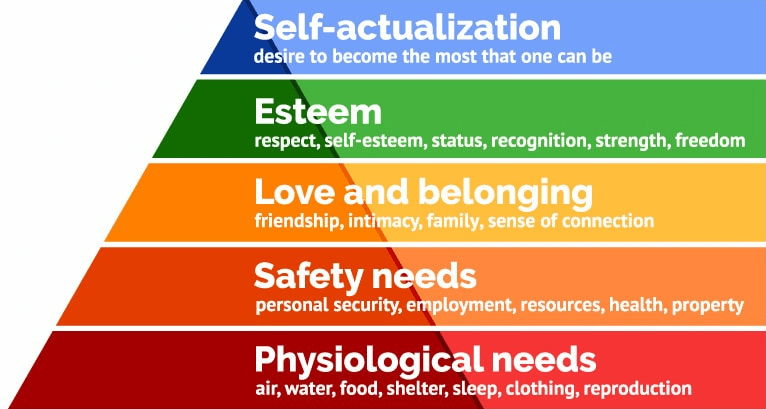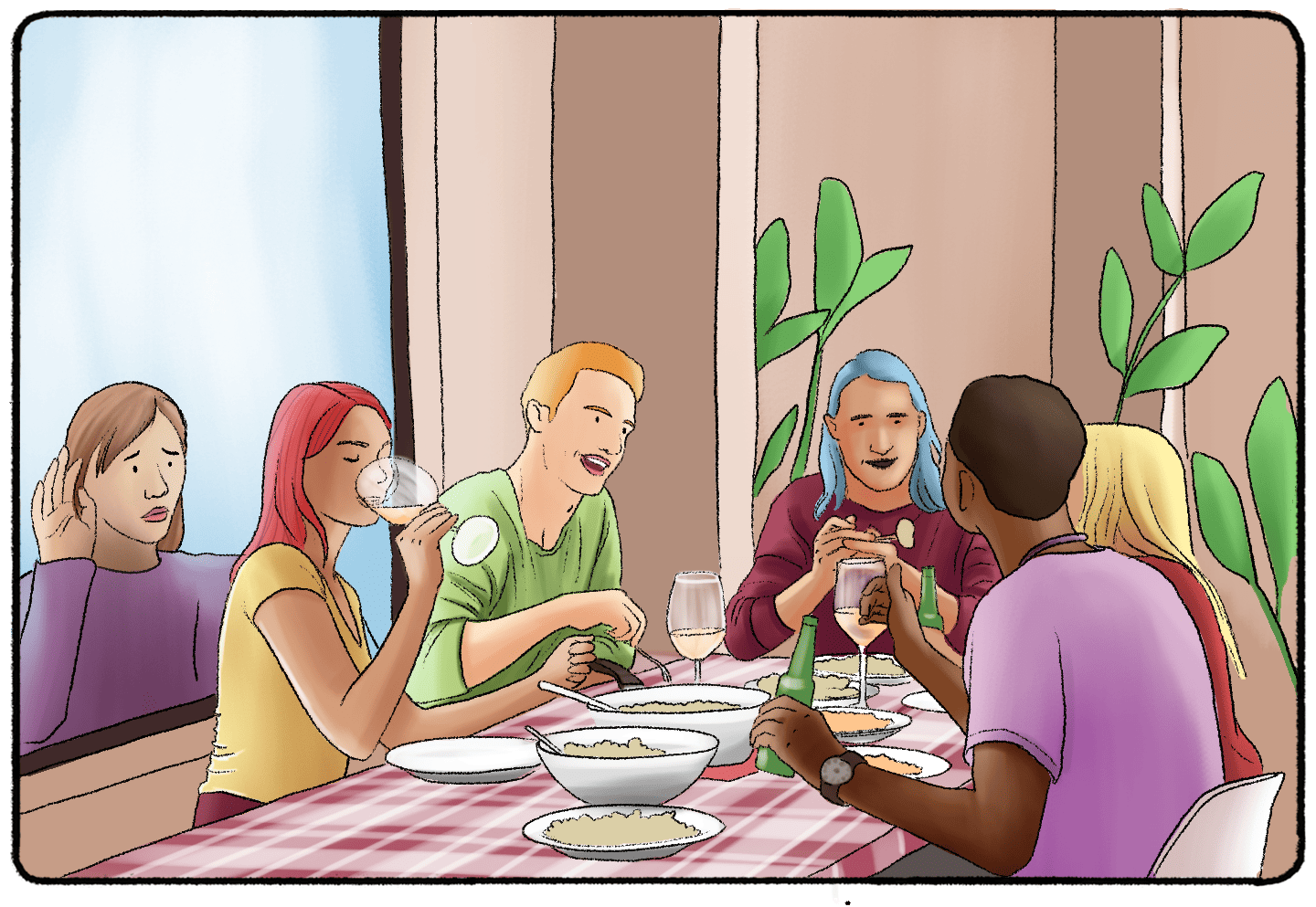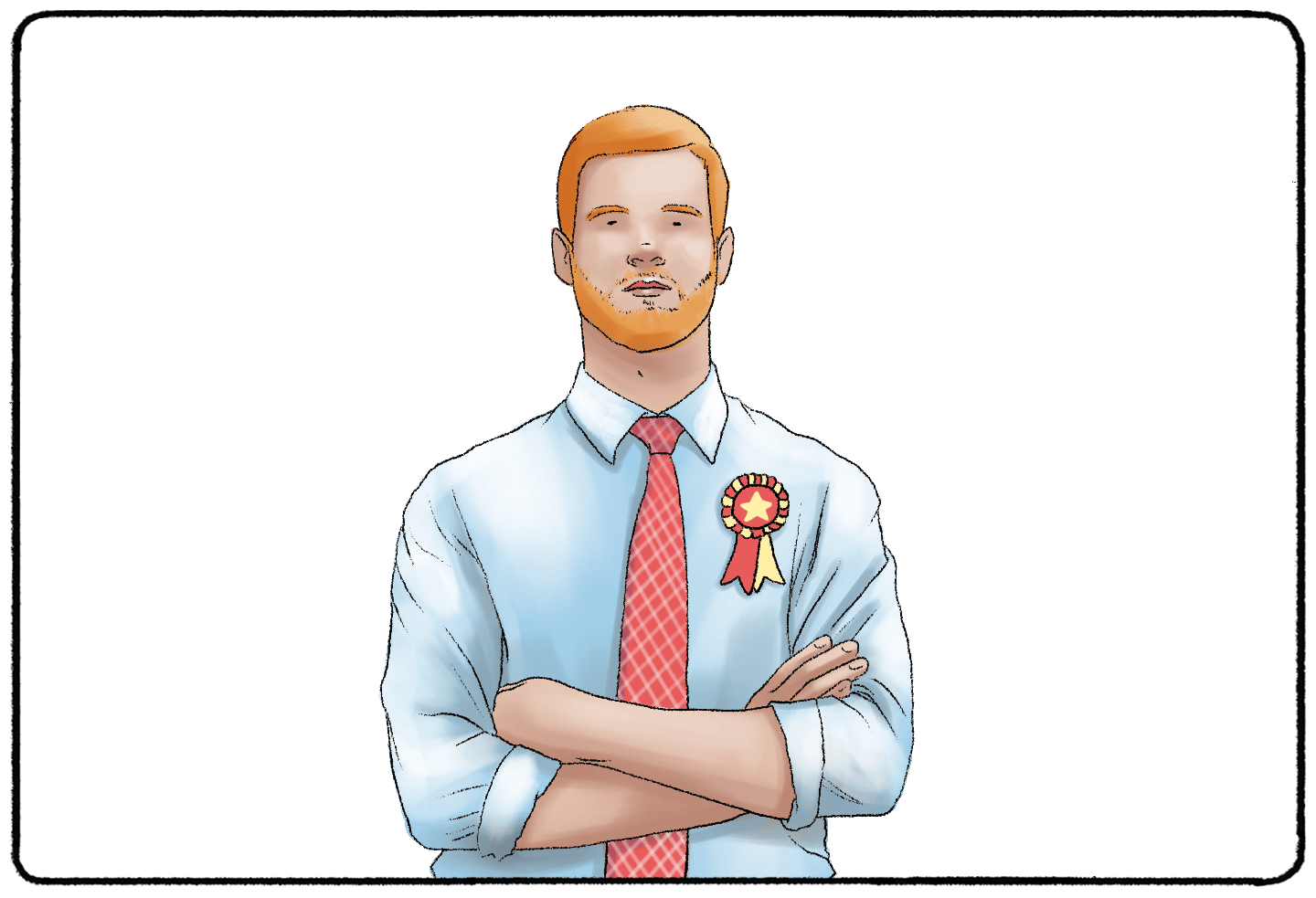Maslow is most known for his Hierarchy of Needs. This is a diagram shaped like a pyramid, with “basic needs” at the bottom and “self-actualization” needs at the top. Maslow believed that when the needs at the bottom of the pyramid have not been yet, our motivation goes toward these basic needs. Once those needs are fulfilled, we focus on the needs at the top of the pyramid.
Maslow was one of the first psychologists to contribute to Humanistic psychology, a “third wave” of psychology after psychoanalysis and behaviorism. Humanism takes a more positive approach to mental health than the first two. Rather than believing that we want to grow because we lack something, humanists believe that we want to grow because we are already fulfilled.
What Is the Hierarchy of Needs?
Let’s review these needs, starting at the bottom of the pyramid. Maslow's Hierarchy of Needs is a psychological model that we use to understand the needs of humans. At the bottom are biological needs like food and water, while purpose and fulfillment are at the top.

Physiological Needs
These are the needs that help us physically survive. It’s hard to focus on anything else when you are starving or dehydrated, like in the example I mentioned at the beginning of this video. That’s why these needs come first.
Physiological needs include things like:
- Food
- Water
- Shelter
- Warmth
- Clothing
- Sleep and rest
Safety and Security
Above these physical needs are other basic needs: safety and security. Back in more primitive days, this is why we formed tribes and small groups. Being part of these groups meant we were protected from predators, warring tribes, and shortages of physiological needs. This is where the “us vs. them” mentality started.
These two sets of needs (physiological needs and safety) are considered our “basic needs.” Without them, we are likely anxious and concerned with nothing more than those needs. If you don’t feel safe in your home, you are probably not too bothered with your place in society or greater purpose in the universe. You just want to feel safe in your home.
Love/Belonging
Let’s go back to the idea of a tribe. First and foremost, belonging to a tribe or a collection of people brought you things like food, shelter, and safety. But we still form groups today. We still have an “us vs. them” mentality today. Why?
Belonging to a group doesn’t always fulfill our basic needs anymore, but it does fulfill our basic psychological needs. Love and belonging are the third section of Maslow’s hierarchy of needs and are the bottom level of psychological needs.
We want to feel loved and love other people. We want to feel like we belong to a group. Without these feelings of love and belonging, we become isolated. Social isolation isn’t just a problem because it prevents us from fulfilling “higher” needs. Research shows that social isolation and loneliness can seriously affect physical and mental health. Who knew that joyous Thanksgiving dinners and lazy nights on the couch with your friends could be healthy?

Esteem
Being a part of a group, whether it's your family, a community organization, or a country, satisfies our inherent need for belonging and connection. Yet, within these affiliations, there's a deeper desire to be acknowledged and valued for our individual contributions and capabilities. This yearning is encapsulated in the fourth level of Maslow's Hierarchy of Needs: esteem.
Esteem needs are intricately tied to our self-worth and the manner in which others regard us. It goes beyond merely being a group member; it touches upon the recognition and appreciation we receive for our unique contributions. Within community settings, satisfying esteem needs can manifest in various ways:
- Leadership Roles: Being entrusted with a leadership position, be it as a team captain, head of a community project, or a senior role in a workplace, often validates a person's abilities and acknowledges their significance within the group.
- Accolades and Recognition: Awards or commendations, whether they are trophies for sports achievements, certificates of excellence in academics, or employee-of-the-month honors, are tangible affirmations of one's accomplishments and skills.
- Verbal Acknowledgment: Positive feedback, compliments, and words of affirmation from peers, superiors, or family members can have a profound impact on bolstering an individual's self-esteem. A simple "Well done!" or "We're proud of you!" can go a long way.
- Responsibilities and Trust: When individuals are given responsibilities, it signals trust in their capabilities. For instance, being entrusted with key tasks in a community event or leading a crucial project at work can deeply satisfy one's esteem.
By recognizing and fulfilling these esteem needs, groups and communities foster individual growth and cultivate a more engaged, productive, and cohesive collective.

Self-Actualization
This set of needs is at the top of the pyramid. Self-actualization, self-fulfillment, and self-transcendence are their own category of needs. This is where we aim to be the best person we can be. Once our other needs are fulfilled, we can focus on self-actualization. We can fulfill these needs by indulging in creative projects, setting big goals, or returning to school.
Historical Context and Impact of Humanistic Psychology
In the broader landscape of psychology, the emergence of Humanistic psychology as the "third force" was significant. Before its advent, the psychological arena was dominated by two prominent waves: psychoanalysis, rooted in the teachings of Sigmund Freud, emphasizing unconscious motives and internal conflicts, and behaviorism, led by figures like B.F. Skinner emphasizes observable behaviors and the influence of the environment on those behaviors. Humanistic psychology emerged in the mid-20th century as a response to these prevailing paradigms.
While psychoanalysis often delves into the recesses of the unconscious mind and past traumas, and behaviorism focuses on external behaviors and responses, Humanistic psychology presents a more holistic approach. It emphasized the inherent goodness of humans, the importance of self-actualization, and the free will to make choices. Its focus was not on the 'dysfunction' but on potential, highlighting the significance of personal growth and self-understanding.
Abraham Maslow and Carl Rogers were pivotal figures in this movement. Their work shifted the spotlight to the individual's subjective experience, providing a fresh lens through which human behavior, thoughts, and feelings could be understood. The emphasis on the individual's journey toward self-actualization, the apex of Maslow’s pyramid, underscored the innate human drive towards self-fulfillment, creativity, and personal growth.
The "third wave" had profound implications in the realm of therapy. Traditional therapeutic methods, which often pathologized patients, began to be complemented by approaches that valued individual experiences and aimed to nurture potential. It endorsed the idea that individuals were not merely products of their environment or prisoners of their unconscious desires but were architects of their destinies, capable of introspection and personal growth.
This paradigm shift in understanding human behavior and motivation emphasized humans' intrinsic potential and resilience. As Maslow's Hierarchy of Needs illustrates, there is a profound human urge to achieve fulfillment and purpose beyond mere survival. This humanistic approach paved the way for various therapeutic practices and interventions integral to modern psychology.
What motivates you to take action?
You already know that the answer varies daily, moment to moment. Let’s say you’re on a road trip to see your family for a reunion. You’re excited to get to your destination but become very hungry along the way. Suddenly, you are all concerned with finding the nearest fast-food place, even if it means going out of your way.
Once you’ve had dinner, it’s back to business as usual.
Why did your motivation change? Because you were hungry. We’ve all experienced something like this: your hunger, thirst, need to use the bathroom, or need to nap takes over everything else you had planned to do. Once these are fulfilled, you can focus on fulfilling larger needs.
A psychologist named Abraham Maslow took notice of this idea. In the 1940s, his ideas on motivation and mental health were revolutionary. He looked at how people could fulfill their needs to reach higher goals.
Humanism helped many psychologists and therapists discover new ways of understanding people’s motivations and helping them reach their overall goals. Its impact began with concepts like the Hierarchy of Needs.
Deficiency Needs vs. Growth Needs
Maslow's Hierarchy of Needs operates on the fundamental distinction between two types of needs: deficiency needs and growth needs. His model suggests that an individual's development depends on satisfying these needs in sequence.
Deficiency Needs
These needs arise from a lack of a deficit and revolve around physiological, safety, belonging, and esteem categories. Maslow theorized that when these needs are unmet, an individual experiences tension, discomfort, or anxiety.
- Physiological Needs: These are our most basic requirements for survival, like food, water, and shelter. A person feeling hunger or cold is motivated by a deficiency of food or warmth.
- Safety Needs: Individuals seek to create security environments once physiological needs are satisfied. For instance, ensuring physical safety, finding stable employment, or acquiring health insurance are pursuits to overcome feelings of vulnerability.
- Belonging Needs: Beyond the physical, humans have an intrinsic need to connect and belong. Joining clubs, forming friendships, or seeking companionship are ways to overcome feelings of loneliness and isolation.
- Esteem Needs: After feeling a sense of belonging, the need for esteem emerges. Being valued, respected, and recognized by peers or achieving mastery in a skill are essential for one's self-worth.
Fulfilling these deficiency needs is essential not just because they are basic prerequisites for survival but because their satisfaction creates a foundation upon which individuals can strive for higher, more abstract aspirations.
Growth Needs
Once deficiency needs are adequately met, individuals transition to growth needs, focusing on personal growth, self-fulfillment, and achieving their highest potential.
- Self-Actualization: This is the pinnacle of the Hierarchy of Needs. Here, the motivation shifts from addressing deficiencies to pursuing personal growth, creativity, and self-realization. At this stage, individuals aim to become the best versions of themselves, exploring their passions and talents and maximizing their capabilities.
Thus, in Maslow's perspective, before individuals can fully engage in acts of creativity, altruism, or self-improvement (aspects of self-actualization), they must first ensure that their basic, deficiency-driven needs are securely met. This progression underscores the interconnectedness and the hierarchical nature of human needs in his model.
Studies on Deficiency vs. Growth Needs
Maslow’s hierarchy of needs is used in personal development courses, business seminars, and basic psychology classes. But this pyramid doesn’t apply to adults wanting to grow and learn. Teachers can help their students learn more efficiently by understanding the impact of deficiency needs. If a child lacks safety, a sense of belonging, or basic needs, they may not be able to learn as well as children who are more fulfilled.
Data backs this up. For example, a study from 2012 looked at children’s deficiency needs and compared it to their performance in school. They concluded they were less likely to excel if a child had failed to fulfill their deficiency needs.
What needs had the biggest impact? Health and dental care. If a child cannot satisfy the basic physiological needs in Maslow's Hierarchy of Needs, they may not be in the right headspace to learn and grow. Many argue that this is why children from lower-income households may fall short at school. It’s not because they’re not smart. It’s because their needs are not being met at home. Others argue that this is why school lunches should be free. By investing in children both in and out of school, we could help our children succeed and set all of us up for a better future.
Maslow's Hierarchy of Needs Are Flexible But Important to Remember
While Maslow's Hierarchy of Needs is a theoretical framework, it offers invaluable insights into understanding human motivations and behaviors. Throughout history, countless examples have demonstrated the resilience of the human spirit, showing that individuals can indeed strive for growth even when confronted with unmet basic needs. Nevertheless, having an awareness of this hierarchy can be beneficial in various facets of life:
- Self-awareness: By recognizing where you might be on this hierarchy, you can better understand your motivations and aspirations. This understanding can guide personal development efforts and life choices.
- Empathy: In social and professional interactions, understanding that others might have unfulfilled deficiency needs can foster compassion, patience, and effective communication.
- Leadership & Management: For those in leadership roles, recognizing the needs of team members can lead to more effective management strategies, fostering environments where individuals feel safe, valued, and motivated to achieve.
- Personal Relationships: Recognizing the needs of loved ones, and supporting them in their journey, can strengthen bonds and mutual understanding.
Remember, while Maslow’s model provides a structured understanding, human behavior is complex and multifaceted. It's not always about ticking boxes in a sequential order. Instead, use this framework to enhance self-awareness, improve interpersonal relationships, and optimize environments conducive to growth and fulfillment. Ultimately, the path to self-actualization is unique for every individual, influenced by personal experiences, aspirations, and circumstances.
